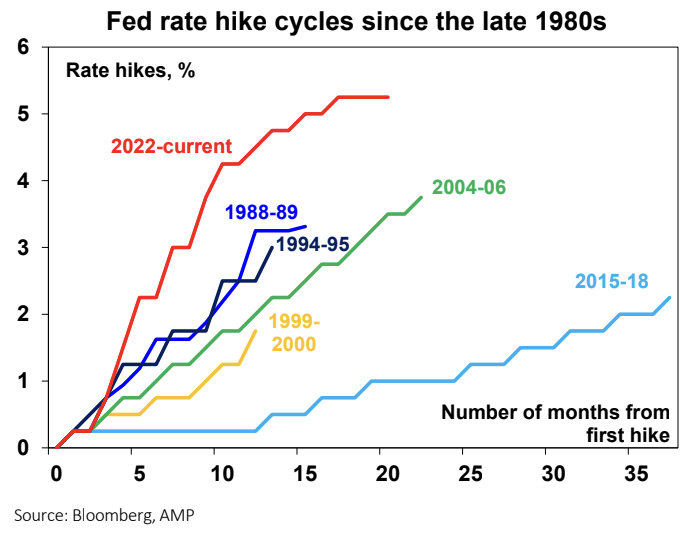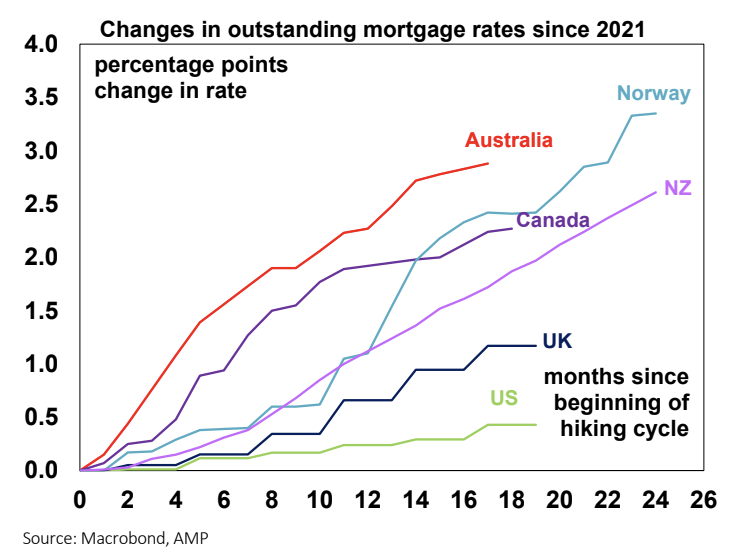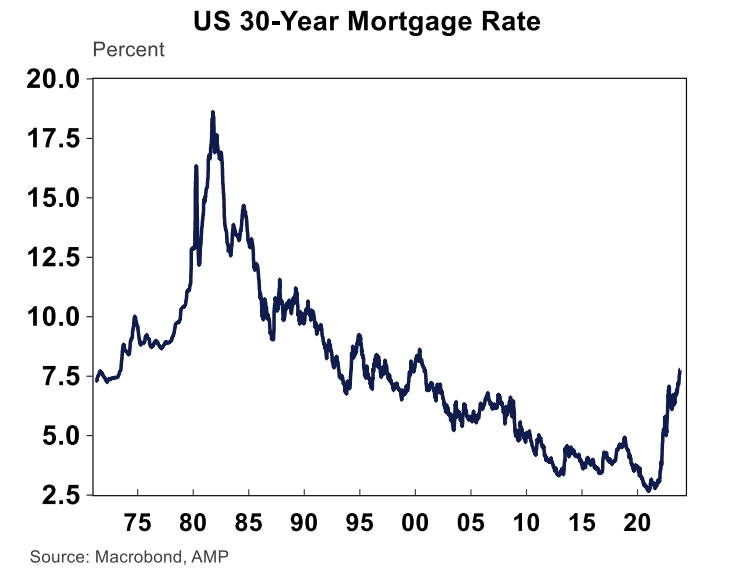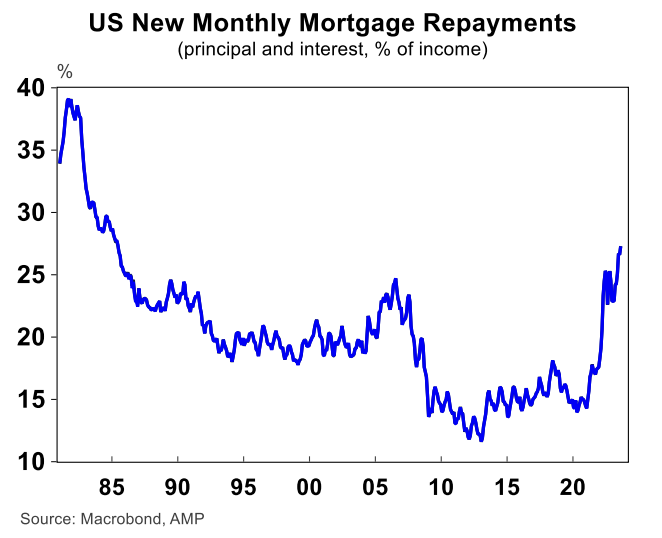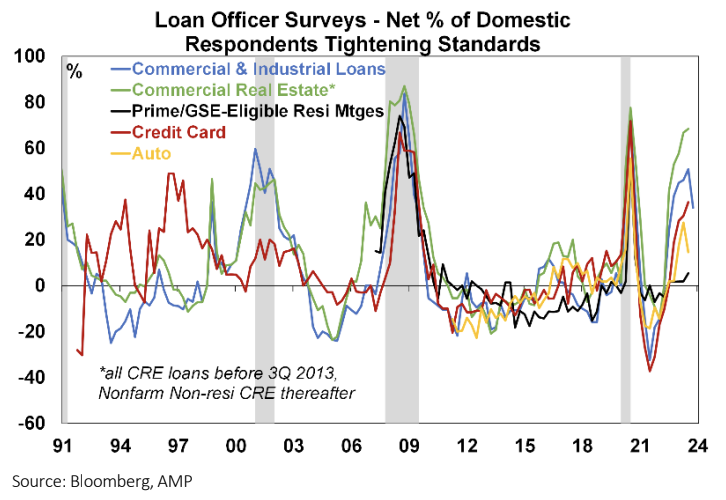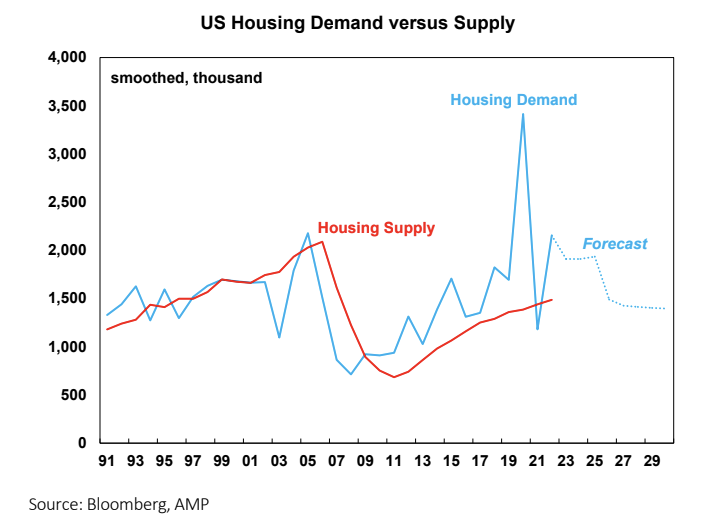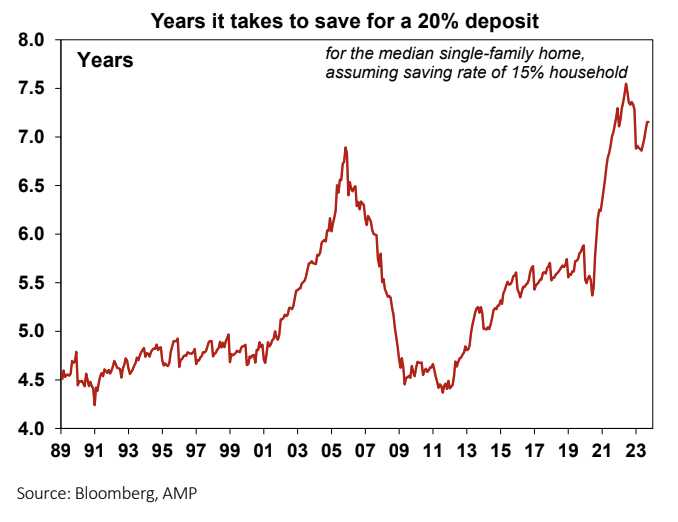The US Federal Reserve has raised interest rates by 525 basis points (or 5.25%) since March 2022, which has been the fastest tightening cycle in the US since the late 1980s. In this wire, we look at the impact of these interest rate increases on the US housing market.
The impact on households with a mortgage
The pass-through of interest rate hikes on US households with an existing mortgage is low because more than 95% of US home loans are on long-term fixed mortgage rates (for ~ 30 years). The increase in outstanding mortgage rates has only risen by 0.43%, compared to the 5.25% lift in the Fed Funds Rate – see the chart below.
This is significantly different to the higher pass-through of rate increases in countries like Australia, Norway and Canada which have a high share of variable and short-term fixed home loans.
This means that in the US, the largest impact of interest rate increases is on new borrowers - those who are just entering the housing market or existing homeowners that need to refinance. The 30-year mortgage rate is now close to 7.8%, which is more than double early 2022 levels and the highest level since late 2000.
As a result, mortgage repayments as a share of income for new borrowers have risen to a 39-year high of 27% (see the chart below) after averaging 15% in the past decade.
Mortgage applications have collapsed and are running around their lowest levels since 1997 and refinancing activity is tracking at its lowest levels since 2000 which was around the time of the US tech crash and the 2001 recession. Residential lending standards have tightened marginally, but not as much compared to the commercial sector (see the chart below) which was severely impacted by the banking crisis earlier this year.
The impact on residential construction and home prices
US residential construction has averaged 3.7% of GDP in the past decade. After peaking at 4.4% in the post-COVID upswing, it has since fallen to a cyclical low of 3.3% in September 2023. Rising interest rates are usually negative for housing construction because demand for new homes comes under pressure as the cost of credit increases.
There is also a negative flow-on impact on other parts of the economy as reduced housing market activity leads to a reduction in housing purchases related to furnishings. Retail spending on household furnishings is down by nearly 6% compared to a year ago. Lower housing construction also means a decline in housing supply which has already been tracking below housing demand for most of the past 14 years (see the next chart).
On our estimates, housing demand based on household formations will average around 1.9 million homes over the next few years. Housing supply (i.e. the completion of dwellings) has been running well below this level, at around 1.4 million homes over the past three years. This leaves a roughly 500,000 home shortfall every year. Continued home under-building leads to chronic housing undersupply which puts upward pressure on home prices and rents.
Some good news has been that building permits and housing starts look to have bottomed earlier this year and are slowly starting to trend higher which will be positive for new housing construction.
US housing undersupply is a factor behind this year’s turnaround in home prices, despite the increase in interest rates. After reaching a bottom in January 2023, housing prices have increased by 6.4%, with prices now back to a record high, according to the S&P CoreLogic Case-Shiller national home price index.
There are differences in conditions across different regions with high price growth on the east coast versus low growth on the west coast.
The lift in both prices and borrowing rates means that it has become increasingly difficult to get into the housing market. On our calculations, it now takes 7 years to save for a deposit (see the chart below) up from around 5.5 years pre-pandemic and around its highest levels on record.
Implications for investors
The significant tightening in US interest rates since March of last year has led to some weakness in housing activity, predominantly in lending growth and a decline in residential construction. However, GDP growth has held up extremely well despite the weakness in these parts of the housing market because of continued strong growth in consumer spending as the impacts of rate hikes have not been felt by all households.
Long-term fixed mortgage rates in the US have led to a low pass-through of rate hikes for households with existing loans that still have many years to finish.
However, US GDP growth is expected to slow in 2024 (we think to less than 0.8% over the year to December), from ~2% in 2023 as the lagged impacts of higher interest rates continue to impact more households and businesses. The lift in the unemployment rate will also weaken consumer spending power. The chance of a US recession in 2024 is still high.
We expect that the US Federal Reserve will have to cut interest rates in 2024 as a further slowing in inflation and growth gives the central bank cause to ease policy conditions.
Never miss an update
Enjoy this wire? Hit the ‘like’ button to let us know.
Stay up to date with my current content by
following me below and you’ll be notified every time I post a wire
